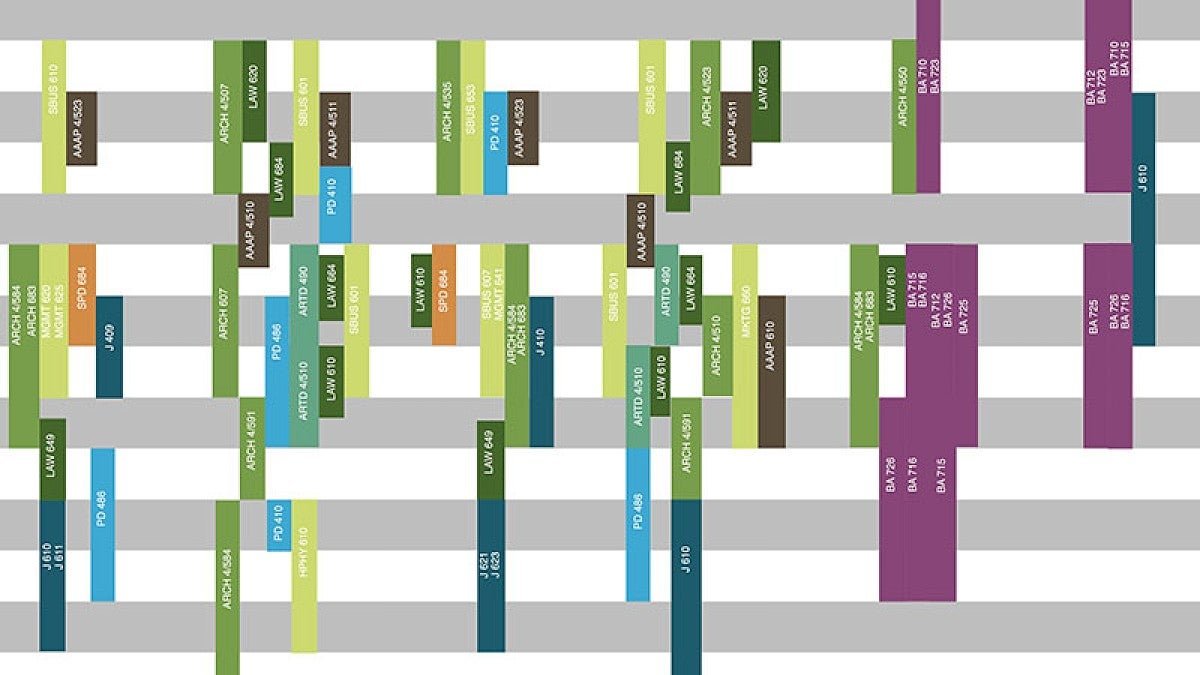From a distance the image looks like abstract pixel art, with colorful bars dripping down the page. But up close, the poster serves a practical purpose of representing most of the academic courses offered this term at UO Portland. Nearly 400 students started classes this fall at the White Stag Block in Portland, nearly double the number from just two years ago.
“The library staff created this visual representation of the robust academic life in the building,” said Karen Munro, head of the UO Portland Library and Learning Commons. “Our staff provides the library and instructional technology support for students and faculty. We wanted to capture it all in one place and not lose track of the new classes, programs and students.”
During the last two years, new masters programs launched in sports product management and sports product design, the law school added a third-year option in Portland, historic preservation moved its master's degree program from Eugene to Portland and the Oregon Executive MBA moved from its longtime location downtown to the UO Portland’s core campus in Old Town Chinatown. They joined previously established master's degrees in architecture, multimedia journalism and strategic communication, as well as fifth-year programs in art and technology (previously known as digital arts) and product design.
Classes are offered primarily from 8 a.m. to 9:30 p.m. Mondays through Saturday. Students from various programs often don’t get the chance to interact because of the wide distribution of classes throughout the week.
“It’s important to help create a sense of campus life and connection for our students. This helps to reveal the activity in the building and for students to see they are part of a bigger enterprise,” Munro said.
In addition to offering core library services, such as access to books, journals and databases and providing technology support, the Portland outpost is able to serve as a small-scale testing laboratory for other services. This includes access to geographic information system software and instruction in using it and providing specialized technology — such as digital cameras, GoPros, iPads and handheld scanners. The library also houses an architectural material samples collection, providing samples of building materials for architecture students to explore.
—By Heidi Hiaasen, University Communications


